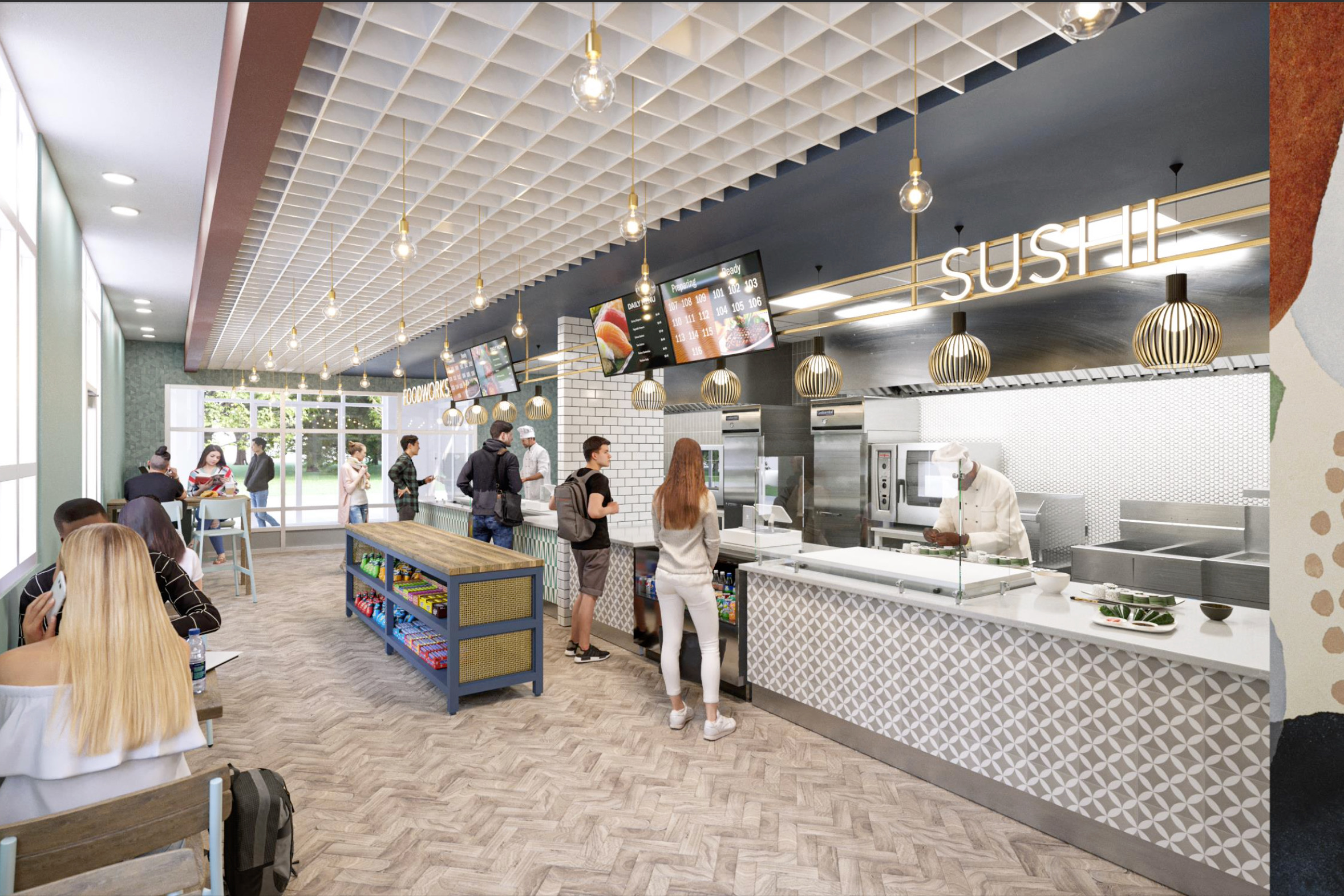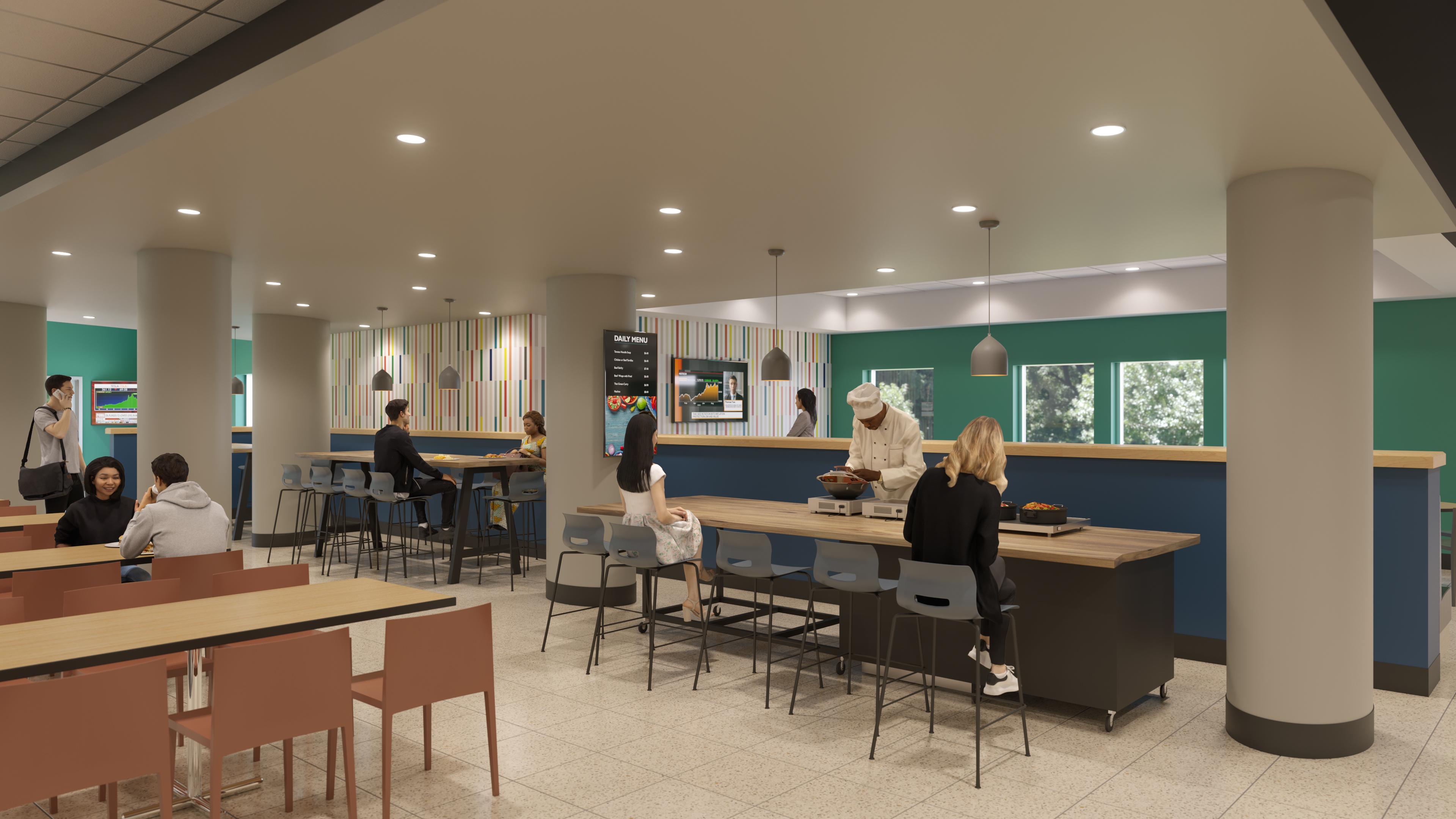By Nick Erickson
Construction is underway and on schedule for the dining facility in Shenkman Hall, which is the next step of the university’s reimagined dining plan introduced last August.
In the fall, Shenkman and Thurston Halls will feature the all-you-care-to eat, unlimited dining plan that the Eatery at Pelham Commons on the Mount Vernon campus has been offering since the start of the academic year. Dining options will be available in District House in the fall through a meal exchange option for students participating in the block or unlimited meal plans. The District House experience will be introduced later in the 2022-2023 academic year. These new dining spaces will enhance GW’s mission of creating more of a community and sustainable dining experience by taking student choice into consideration.
“Students will have the option to pick and choose from a variety of items, and there will be several stations—an Asian concept, a pasta concept—that are set up and will change with food trends,” new Executive Director of Dining Douglas Frazier said of the Shenkman Hall update. “Students have the options to pick and choose and kind of create their own dining experience.”
The change is a part of the university’s multi-year transformation from a full retail model to a community-focused residential model of dining. As choice is a staple of this movement, the GW Dining Team recently announced that it will offer six different meal plans for the 2022-2023 academic year.
Students can choose from three unlimited meal plans per semester where the swipe of a GWorld card will allow students to eat whatever and whenever they feel like in the dining halls. These plans offer unlimited swipes plus $100, $250 or $500 in dining dollars to spend at on- or off-campus GWorld dining partners. These unlimited plans, designed to create flexibility and value, will be available to all first- through fourth-year students.
“Students are not going to have to budget the way that they have in the past,” said Seth Weinshel, associate vice president of Business Services. “They're just going to go and eat whenever and whatever they want to eat and not necessarily worry about how much of a declining balance they have or how many dining dollars they have left. You just go into the dining hall and eat.”
There will also be three block-based meal plans for next year’s second-, third- and fourth-year students, with options of 120 block meals per semester (plus $600 dining dollars), 150 block meals per semester (plus $500 dining dollars) or 175 block meals per semester (plus $400 dining dollars). The block meal plans allow students to use the dining halls’ all-you-care-to-eat options. Students enrolled in the block plan can use up to 16 meal equivalency swipes per semester at Chick-fil-A on the Foggy Bottom campus and the newly opened Buff and Brew coffee and tea bar in Ames Hall at the Mount Vernon campus. The unlimited dining plan will feature two equivalency swipes per week for the same retail locations.
Dining dollars can be used on-campus at Chick-fil-A, Buff and Brew, Shenkman Market, Kin’s Sushi and participating GWorld vendors.
In addition to the flexibility and value, GW Dining is also emphasizing community building and sustainability. Chefs at the revamped dining facilities will use local products and introduce different cultural cuisine for students on a rotating basis, as Frazier said.
That operation is underway at The Eatery at Pelham Commons on the Mount Vernon campus, where first-year communication and marketing major Linnea Kerber is the student dining representative. She mentioned that chefs have been interactive with students and have sought their feedback.
“Over winter break, they actually changed up some of the dining area and implemented a salad bar and sandwich making bar, so it’s like they really took our ideas to heart,” she said.
Frazier came to GW from New York because of the opportunity to help build a program from the ground up and help implement a transformative way students dine. He, along with the rest of GW Dining, is excited that the Shenkman Hall food area demolition signals another step closer to it all coming together.
“I think it's really exciting,” Frazier said. “I think students are going to be very, very pleased once we're up and running and they understand the program and understand the different options that they have.”










